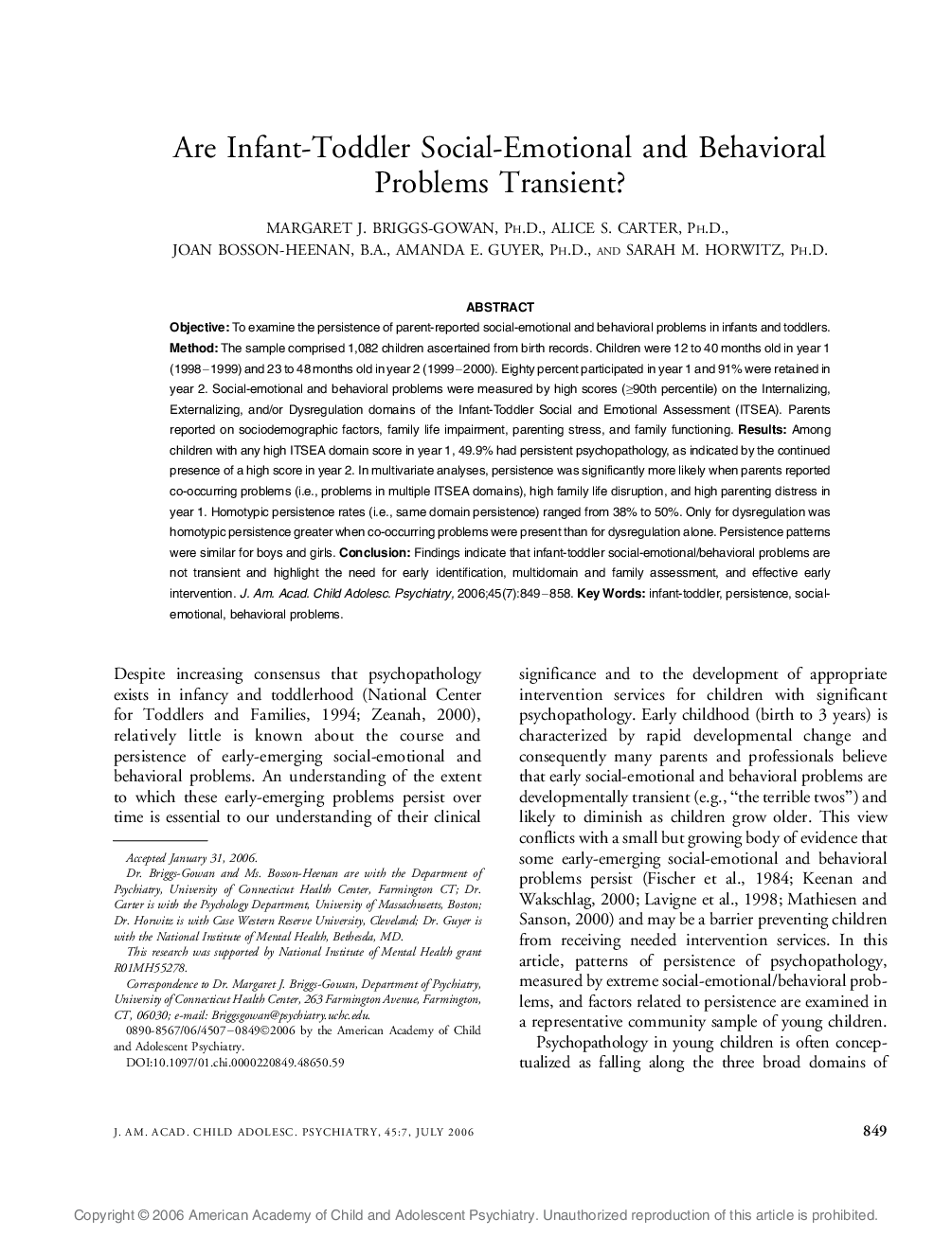| Article ID | Journal | Published Year | Pages | File Type |
|---|---|---|---|---|
| 325923 | Journal of the American Academy of Child & Adolescent Psychiatry | 2006 | 10 Pages |
ABSTRACTObjective:To examine the persistence of parent-reported social-emotional and behavioral problems in infants and toddlers.Method:The sample comprised 1,082 children ascertained from birth records. Children were 12 to 40 months old in year 1 (1998-1999) and 23 to 48 months old in year 2 (1999-2000). Eighty percent participated in year 1 and 91% were retained in year 2. Social-emotional and behavioral problems were measured by high scores (≥90th percentile) on the Internalizing, Externalizing, and/or Dysregulation domains of the Infant-Toddler Social and Emotional Assessment (ITSEA). Parents reported on sociodemographic factors, family life impairment, parenting stress, and family functioning.Results:Among children with any high ITSEA domain score in year 1, 49.9% had persistent psychopathology, as indicated by the continued presence of a high score in year 2. In multivariate analyses, persistence was significantly more likely when parents reported co-occurring problems (i.e., problems in multiple ITSEA domains), high family life disruption, and high parenting distress in year 1. Homotypic persistence rates (i.e., same domain persistence) ranged from 38% to 50%. Only for dysregulation was homotypic persistence greater when co-occurring problems were present than for dysregulation alone. Persistence patterns were similar for boys and girls.Conclusion:Findings indicate that infant-toddler social-emotional/behavioral problems are not transient and highlight the need for early identification, multidomain and family assessment, and effective early intervention.
